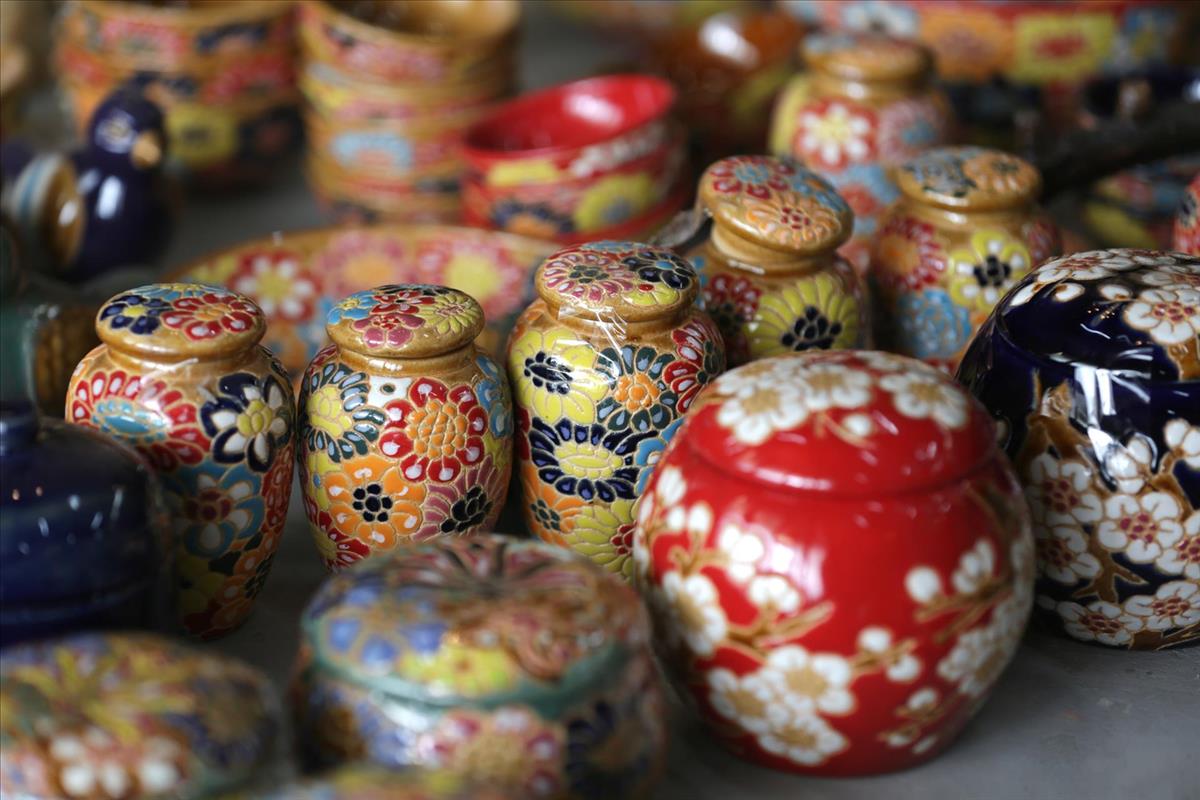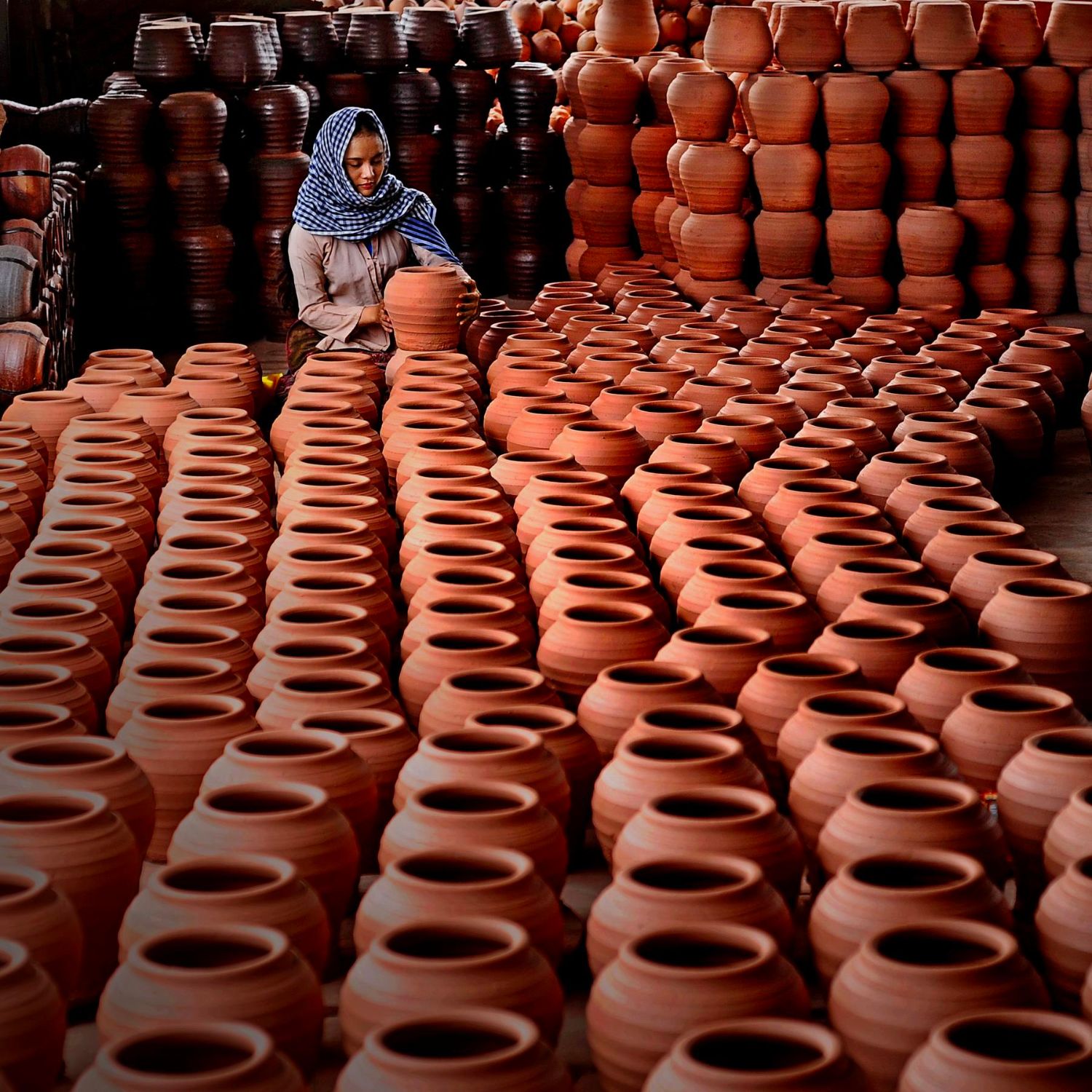PRODUCTION AND BUSINESS ACTIVITIES OF SMALL-SIZED INDUSTRY OF SOUTHERN CHINESE PEOPLE (Part 1)

1. Pottery
The pottery-making profession of the Southern Chinese people has contributed to the economy of this community from a very early stage. Ceramic craftsmen joined the Chinese immigrants to the Southern region, establishing many small workshops in the Bien Hoa (Dong Nai), Thu Dau Mot (Binh Duong) and Cho Lon (Ho Chi Minh City) areas. These workshops gradually developed and gathered many craftsmen, becoming ceramic production centers with a large number of Chinese people participating. Currently, in the Thu Dau Mot area, there are still some Chinese ceramic kilns that are nearly a century old. In the Cho Lon area of Ho Chi Minh City, there are still some places related to this industry, such as Lo Gom, Lo Sieu, Lo Gach... marking the ceramic production activities of the Chinese people here. Many archaeologists have found relics of the ceramic industry in District 8 of Ho Chi Minh City, the birthplace of the once-famous Cay Mai ceramics.
For decades, Chinese ceramics have not only been widely circulated in the domestic market but also exported to some Southeast Asian countries. Chinese ceramic products are rich in variety, including household ceramic products such as jars, tiles, bowls, pots, etc. In addition, fine art ceramics, worship items such as vases, cups, plates, incense burners, etc. have also reached the pinnacle of shaping techniques.
Nowadays, the Chinese ceramic craft has changed a lot; ceramic crafting techniques are applied with science and technology, with ceramic kilns, mechanized and modernized production lines. Chinese ceramic products are not only diverse in design but also meet international standards. Minh Long Ceramic Company in Binh Duong is one of the famous Chinese establishments in this industry. Minh Long ceramic products not only meet domestic consumption needs but also export strongly to markets in Europe, North America, Japan, etc.

2. Food processing
Food processing is a strength of the Southern Chinese. Since the French colonial period, in the South, many rice milling facilities of Chinese capitalists were established along the Tau Hu Canal and the Cho Lon area. Boats of Chinese traders purchased rice from many localities in the Mekong Delta and gathered at Chinese milling and processing facilities in Saigon. The processed rice was of high quality and exported to Southeast Asian countries and China. During the Republic of Vietnam government, Saigon was one of the rice milling centers of the South with the participation of many Chinese capitalists and thousands of Chinese-Vietnamese workers. Ma Hy was a Chinese capitalist who became the "rice king" of the South at that time.
Since 1975, many Chinese rice milling and food processing facilities have been nationalized. This industry is managed by the state with the participation of a large number of Chinese workers. These facilities continue to operate to meet domestic and export food needs. In addition to food processing, Chinese food processing activities have also developed dynamically with a variety of products. With a unique culinary tradition, Chinese food processing facilities have introduced to domestic and foreign markets products with Chinese flavors such as wontons, dumplings, various types of buns, noodles, packaged vermicelli, instant noodles, cakes, etc. Some famous Chinese food processing companies are known to many people, such as Cau Tre, Kinh Do, Dong Khanh, Hy Lam Mon, Duc Phat, Asia ABC, etc. The Soc Trang pia cake brand is no longer strange to Vietnamese people. In addition to cakes, the Soc Trang Pia Cake facility also produces famous products such as Chinese sausage, duck sausage, etc. In Phu Quoc, seafood processing facilities such as dried fish, dried shrimp, and Chinese fish sauce are also very developed. Cau Tre Food Processing Enterprise, in addition to foods, also processes teas, especially Oolong tea. Every year, on festivals such as Lunar New Year, Mid-Autumn Festival, etc., many types of Chinese cakes with a variety of colors, styles, and unique processing techniques of the Chinese have been exported to the US, Europe, etc., to serve the large demand of the Vietnamese and Asian communities around the world.

